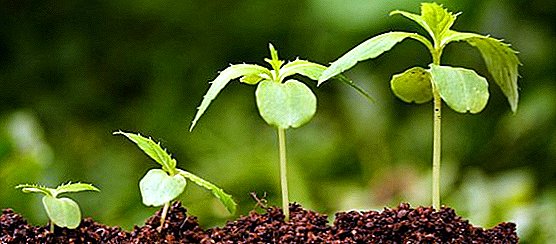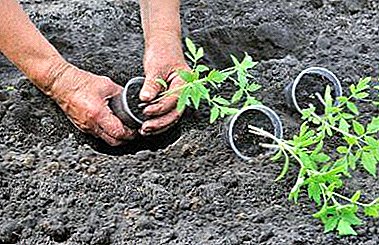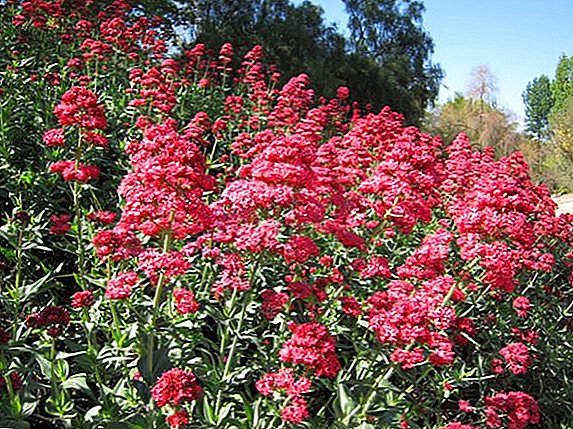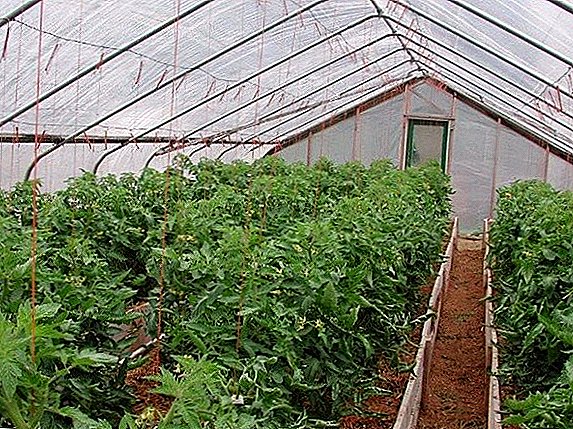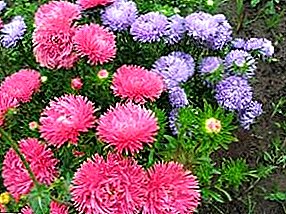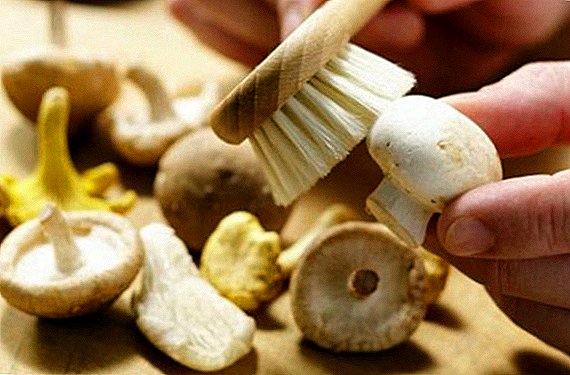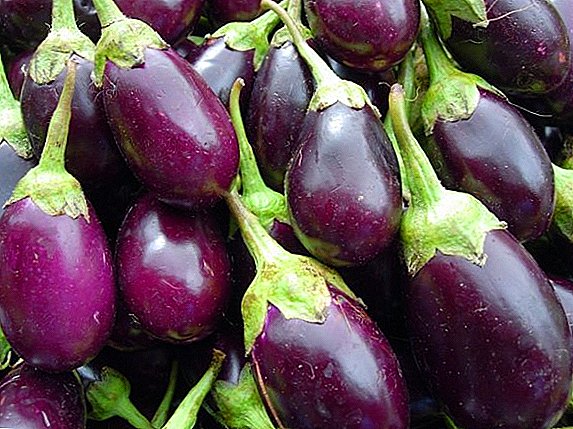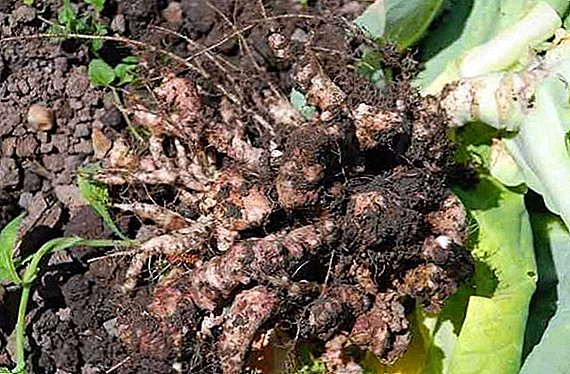 Today, cabbage is one of the most important vegetable crops in our country, which is grown on every household plot. And when she starts to hurt or dies at all, it becomes a pity the time and effort spent. The most common disease of cabbage - kila Consider what constitutes this disease and how to get rid of keel on cabbage.
Today, cabbage is one of the most important vegetable crops in our country, which is grown on every household plot. And when she starts to hurt or dies at all, it becomes a pity the time and effort spent. The most common disease of cabbage - kila Consider what constitutes this disease and how to get rid of keel on cabbage.
What is cabbage keel
Kila is a fungal disease that is dangerous for all types of cabbage and other cruciferous plants. The lesion is visually manifested in the inhibition of growth and wilting of the vegetable, with spherical growths appearing on the roots, which eventually begin to rot. Problems with roots lead to impaired metabolism of nutrients and water. However, this is not all - the maturation of growths leads to the fact that the spores of the fungus spread to the ground, affecting it. The problem manifests itself a month later, the field of defeat, so when planting seedlings, this trouble can simply be overlooked.
Radishes, lettuce, horseradish, rapeseed, rutabaga and turnips also belong to the cruciferous family, for which the fungal kila disease is dangerous.

What is dangerous kila?
Kila is dangerous because it spreads easily through the ground. Its spores can live in the ground for up to six years, penetrating the roots of the plants through the smallest feeding roots. Any plant that grows in the contaminated soil is bound to provoke the growth of dangerous spores.
Did you know? According to archaeological excavations, cabbage people used in the days of the Stone and Bronze Age.
Causative agent
The cause of the appearance is mushroom Plasmodiophora brassicae, which can hit not only cabbage, but also radishes, mustard, daikon radish and even watercress. The parasite develops inside plant cells, causing them to increase in size.
Signs of defeat
The disease overwinter in the form of spores, which are in a resting stage. When favorable environmental conditions appear, they begin to germinate, forming mobile zoospores, which enter the plant through root hairs. Inside, he participates in many life processes of the vegetable, which allows it to grow to galls. As a result, there is a violation of the flow of water and nutrients, which is reflected on the ground part of the plant in the form of underdevelopment, yellowing of leaves, underdevelopment of heads. 
Risk group
A disease can occur at any age, but young seedlings that grow quickly are considered the most susceptible. Most often, such problems occur on the roots of white cabbage and cauliflower.
Having understood how to diagnose keel on cabbage, another question arises: what to do in this case.
Preventing and fighting Kila
Kila on cabbage is a serious enough problem for cabbage and other plants of this family, therefore it is extremely important to know how to deal with it correctly in order to save the crop. Although every respectful gardener knows that it is better to prevent any problem than to fight it afterwards.
If you want your cabbage to always bring a rich harvest, read also how to treat and prevent cabbage diseases.

Presowing seed treatment
Before sowing, seeds can be processed in several ways:
- place in an immunostimulator according to the instructions on the package;
- fill the seeds with water (50 ° C) and hold it for 20 minutes. All this time, the liquid should not cool. Then cooled and dried;
- stand the seeds in a 1.5% mustard solution for about 6 hours;
- place the seed in a solution of ascorbic acid for 16 hours. The solution should be the following proportion: 0.1 g of substance per 1 l of water. It is important to stir every hour and rinse the seeds after the whole time.

Soil preparation
The fight against the keel begins with the pretreatment of the land into which the cabbage will later be planted. In the fall, the land is treated with lime mortar, and then rye is planted. In early spring, it quickly rises, after the appearance of greenery, they dig up the earth. Organic fertilizers, such as compost, are added to the end. All this destroys malicious disputes and prevents others from spreading.
To destroy harmful spores, organic fertilizers are applied to the land when planting cabbage: slurry, onion husks, biohumus, nettle fertilizer, charcoal, yeast top dressing, potash salt, peat, manure and NV-101.

Important! You can get a healthy harvest by doing the following manipulations: for three years, plant potatoes, beets, tomatoes, garlic and onions. Every year alternate these cultures in places. Remove weeds and disinfect the soil before planting and harvesting. After the time, you can safely plant cabbage.
Crop rotation
To eliminate the source of infection, it is important that certain crops survive for several years before planting cabbage, which are not only resistant to the keel, but also cause the rapid death of the pathogen. Among all the following medicinal plants can be distinguished:
- Solanaceae - clean the land for three years;
- liliaceans - in two years.
- blooms - remove spores for two years.

Rejecting and planting seedlings
Sowing seedlings carried out even before landing at the main site. It is necessary to remove the underdeveloped and diseased plants, which can be a problem and they can not give a good harvest. Terms of planting early varieties of cabbage from April 25 to early May. Late planted from May 10 until the end of this month. Landing should be done in the morning or in the evening so that the sun's rays will not damage the seedlings. Before planting seedlings, it is important to thoroughly clean the roots of the whole earth. After that, they are treated with lime flour or roll in a clay-lime mash. Planting rules for cabbage:
- good seedlings should have at least five full leaves;
- when picking, you need to get rid of the weak, affected by fungus or without the upper bud of the seedlings;
- watering temperature should be 3 degrees higher than the temperature of the earth;
- in the first days after disembarkation, it is recommended to create seedlings for greenhouse conditions, for example, by covering it with a film;
- on top of the landing place to sprinkle with dry earth - this will help avoid the evaporation of moisture.

Did you know? For the first time, Keila was well studied in 1878. Russian botanist and mycologist M.S. Voronin established the cause, described the main features of the parasite's development, and also indicated which plants could become infected and what to do in this case.
Agrotechnical receptions
The fight against cabbage requires different control measures, which will prevent the possible development of the disease:
- ensure that there is no calcium and potassium deficiency in the earth;
- fill the lack of zinc, boron and chlorine;
- increase humus content above 2.5%;
- prevent overmoistening or drying out of the ground;
- acidic soil needs to lower the pH to neutral.
Additionally, you can hold the following folk tricks.
- 150 g of lime combined with 5 liters of water. Thoroughly stir and pour the resulting solution bushes. For each cabbage need 0.5 liters of solution.
- Fertilize plants mullein solution or slurry. After feeding, high up the pile for the emergence of new, already healthy roots.

If this does not help, the plants are removed and burned along with a clod. The well is treated with a solution of potassium permanganate.
Important! The fungus affects about 200 species of cultivated and wild cruciferous plants. Contaminates acidic soil contamination.
Resistant Cabbage Varieties
Cabbage, which is completely resistant to keel, is not yet known. Today, scientists have developed some varieties that are more resistant than others. They have much higher immunity throughout the growth of the plant, which allows them to better form cabbages, and after decomposition, they restrain the growth of spores. Will consider 10 most resistant varieties of white cabbage.
| Grade name | Harvest time | Application |
| Kilaton | late maturity | Long storage |
| "Ladozhskaya 22" | mid season | Fresh salads and pickles |
| "Kilagerb F1" | late maturity | Salads, storage up to four months |
| "Kilagreg F1" | mid season | Salads, pickling |
| "Hope" | mid season | Ferment |
| "Tequila F1" | mid season | Fresh salads, pickling, storage 4 months |
| "Winter Gribovskaya 11" | mid season | Pickling and storage |
| "Ramkila F1" | mid season | Fresh salads, pickling, storage 2 months |
| "Kilazole F1" | late maturity | Long storage |
| "Taininskaya 11" | middle late | Fresh salads, pickled |
| Klarifay | early | Fresh salads, canning |
| "Clapton F1" | medium early | Salads and Frost |
| "Lateman" | medium early | Salads |


